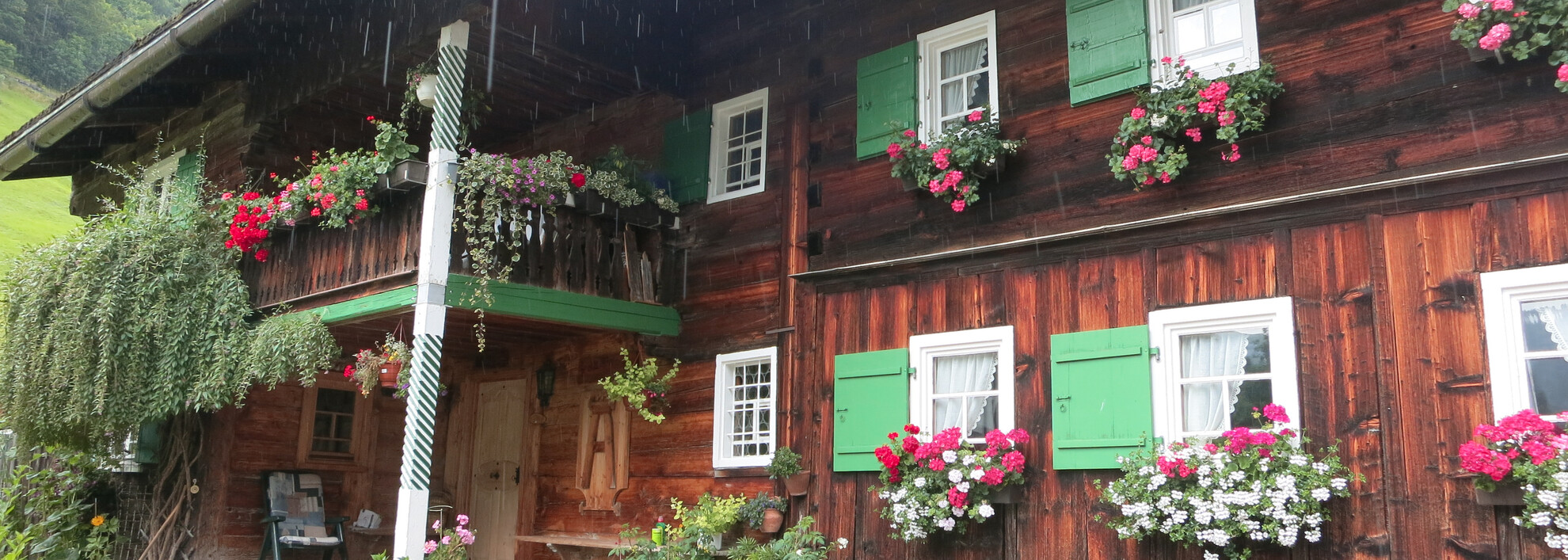
On the Trail of the Walser – Architecture and Way of Life …
... this is the theme every Thursday afternoon when a small group meets in front of the tourist information office in Mittelberg.
On behalf of the tourist information office, Stefan Heim, chronicler of the community of Mittelberg and the go-to person for anything to do with the stories and history of Kleinwalsertal, invites us to join him on a walk to follow in the footsteps of the Walser people of yesteryear.
The Walser people emigrated from the mountains of Oberwallis (Upper Valais) in Switzerland around the year 1270, that is more than 700 years ago. It is assumed that they followed the road through the Hochalppass and the Gemstelpass into the valley. Five Walser families, who were guided by Hans Wüstner, embarked on this arduous journey in order to settle permanently in what is now modern-day Mittelberg and to establish the type of scattered settlements that can be typically seen to today.
The settlers obtained Walser rights (settlers’ rights), namely the personal freedom to cultivate land, the right to establish their own judicial authority and a number of other rights. In Kleinwalsertal many place names and names given to areas of land are derived from words that refer to the clearing of land (schwenden = to clear/grub land, reuten = old form of the word roden also meaning to clear land). Examples include names such as Schwende, Schwendle, Schwand, Kesselschwand, Riezlern. ‘Erlebe das Original’ (Experience the original) is Kleinwalsertal’s advertising slogan. However, what can we actually still call original? If you are observant when you pass through the different districts, it is possible to still discover many original features.
A good example is the Walserhaus in Bödmen which was built in 1552. This is a typical Walserhaus that was built during the first period of building straight after the immigrants arrived around the year 1300. It was a simple log cabin and had two rooms on the first floor, a living room and a kitchen area downstairs and a bedroom upstairs. Parts of the walls were clad with wooden shingles and other areas were plastered with lime mortar. The roof was initially covered with large shingles and then later with smaller hewn shingles with stones laid upon them. A typical feature of the Walserhaus is the Brüüge (wooden portico) which extends out from two walls of the building and the balconies create an open and covered space. This type of wooden portico is a very cosy and inviting place to sit. There is normally a bench that is leant up against the wall and a folding table. The porticos are unique to the Walser valley and are still used today as pleasant places to meet and socialise. The houses were gradually altered and extended over the centuries. Just a short distance from the house, there would stand an old storehouse that was used to store food.
Each house also had a barn that was built a slight distance from the house. Blockkonstruktion, a construction method using blocks of timber, always proved to be the most reliable method for building the Walser barns. The barns were constructed completely from wood and attentive observers will notice that these barns used for feeding animals are called a Huusschtall if they are near to the Walserhaus and Waidschtall if they are located in the meadows. The classic construction method is used time and again: the cow barn is covered in squared timber cladding so that it would be waterproof and keep the warmth inside the building during the winter. A hayloft was located above and constructed using a block construction of beams that were loosely rolled (or in the Walser dialect aufgedröhlt) creating plenty of empty spaces to provide ventilation to dry the hay. The barn was protected on the side facing the mountain by a wall made of stones and earth called an Arche which protected the building from avalanches by ensuring that it would not sustain any significant damage from the weight of the falling snow.
Have you ever noticed the stone penitence cross when you walked through Mittelberg and have you ever wondered what it signifies? Stefan Heim can answer these questions. There are different interpretations to explain its significance. According to local legend, they were erected in the 16th century by individuals who had been found guilty of committing serious crimes (murder or manslaughter). They did not just have to suffer a punishment, they also had to atone for their monstrous acts. They usually had to singlehandedly carve a penitence cross out of stone on the spot where they committed the crime. Two Züüga (from the German word Zeuge for witness) were set into the ground on either side of the cross to act as witnesses of the crime.
It is astonishing and admirable how the dialect and native language of the Walser people has survived and how it is still cultivated today. I have been coming to the valley regularly for a number of years now, however, I am often unable to follow what my native Walser friends are saying in their Walser-Dütsch (Walser German). After an extremely interesting guided walk through Mittelberg, Bödmen and towards Gemsteltal, our three-hour excursion into the past ends with a short walk along what would probably have been part of the route that the Walser people took when they immigrated to the valley all those years ago. This provided us with plenty of time to shower Stefan with lots more questions and to hear his fascinating answers.
What does a genuine Walserhaus look like? What is distinctive about it? How did the Maisäß acquire its name? Why are the doors so low and the windows so small? What was working life and everyday life like for the Walser 100 years ago? What are Heinzen or Kolombbesse and what were they used for? What did the Walser people bring in the way of customs and culture and which are still evident today? If you would like to hear the answers to all these and many other exciting questions, then I highly recommend that you accompany Stefan on one of his tours. You can visit the Heimatmuseum or one of the Heimat evenings, or perhaps stroll along the Walser culture trail.

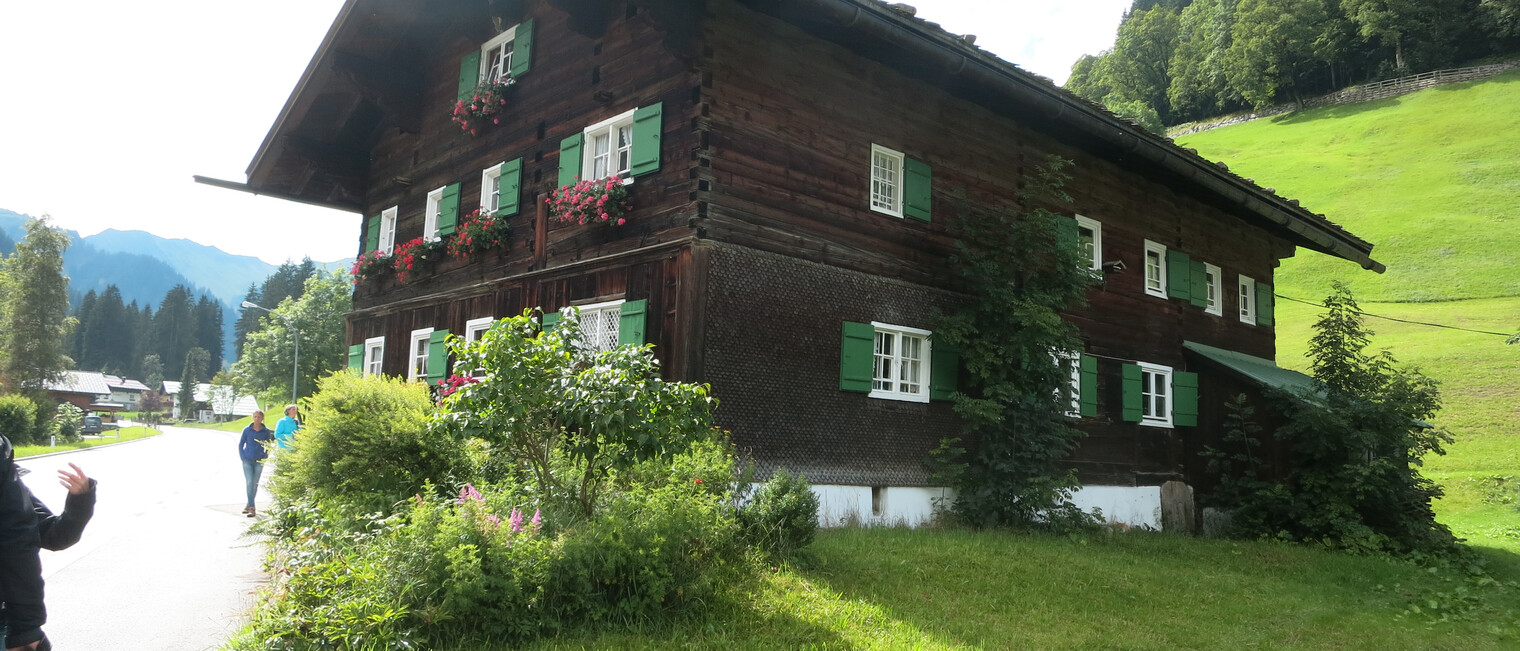






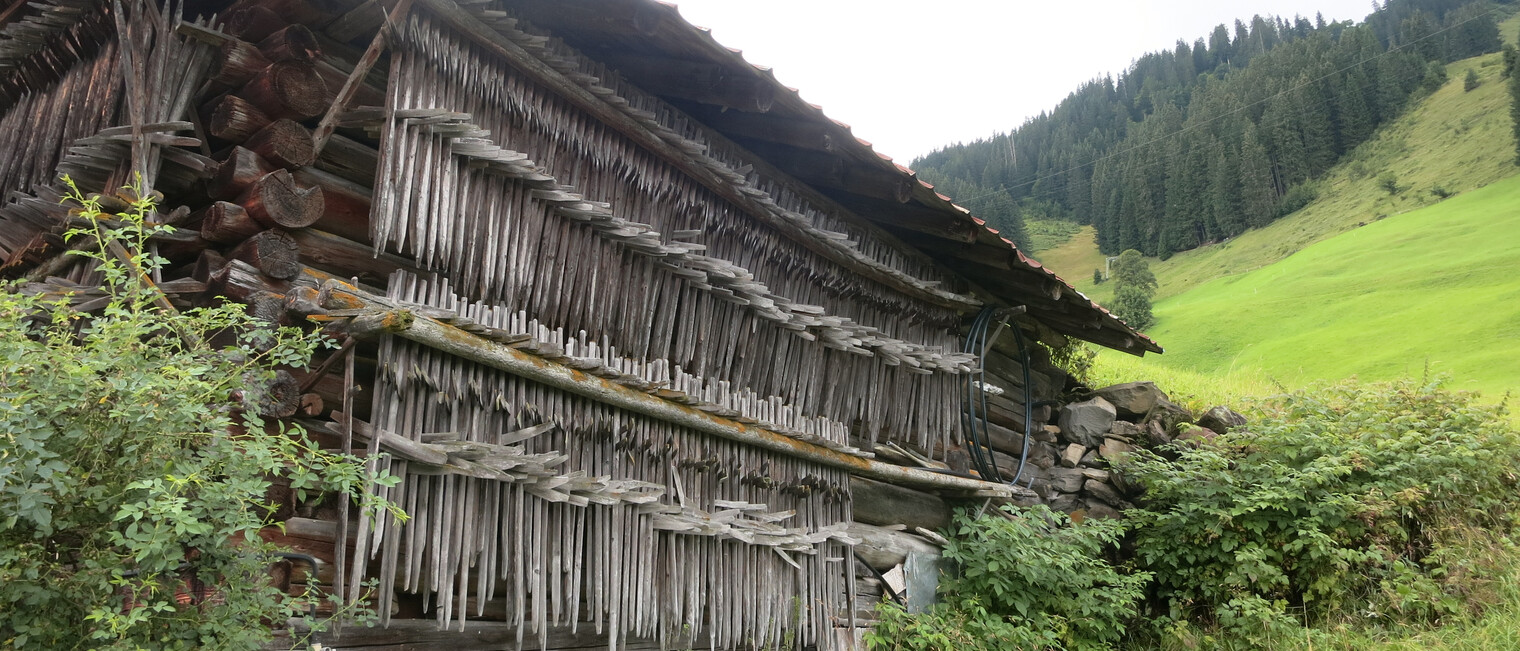



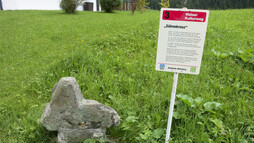

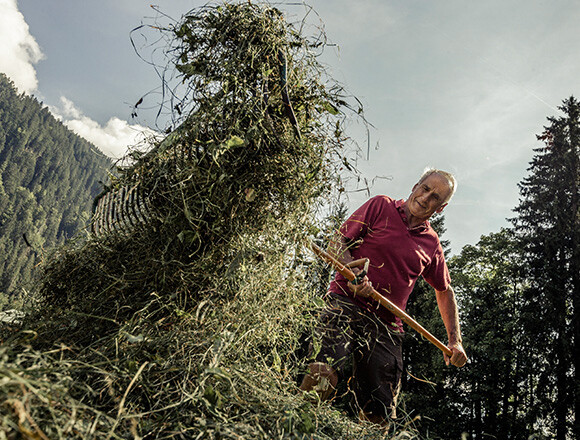

Share page...
...and tell others